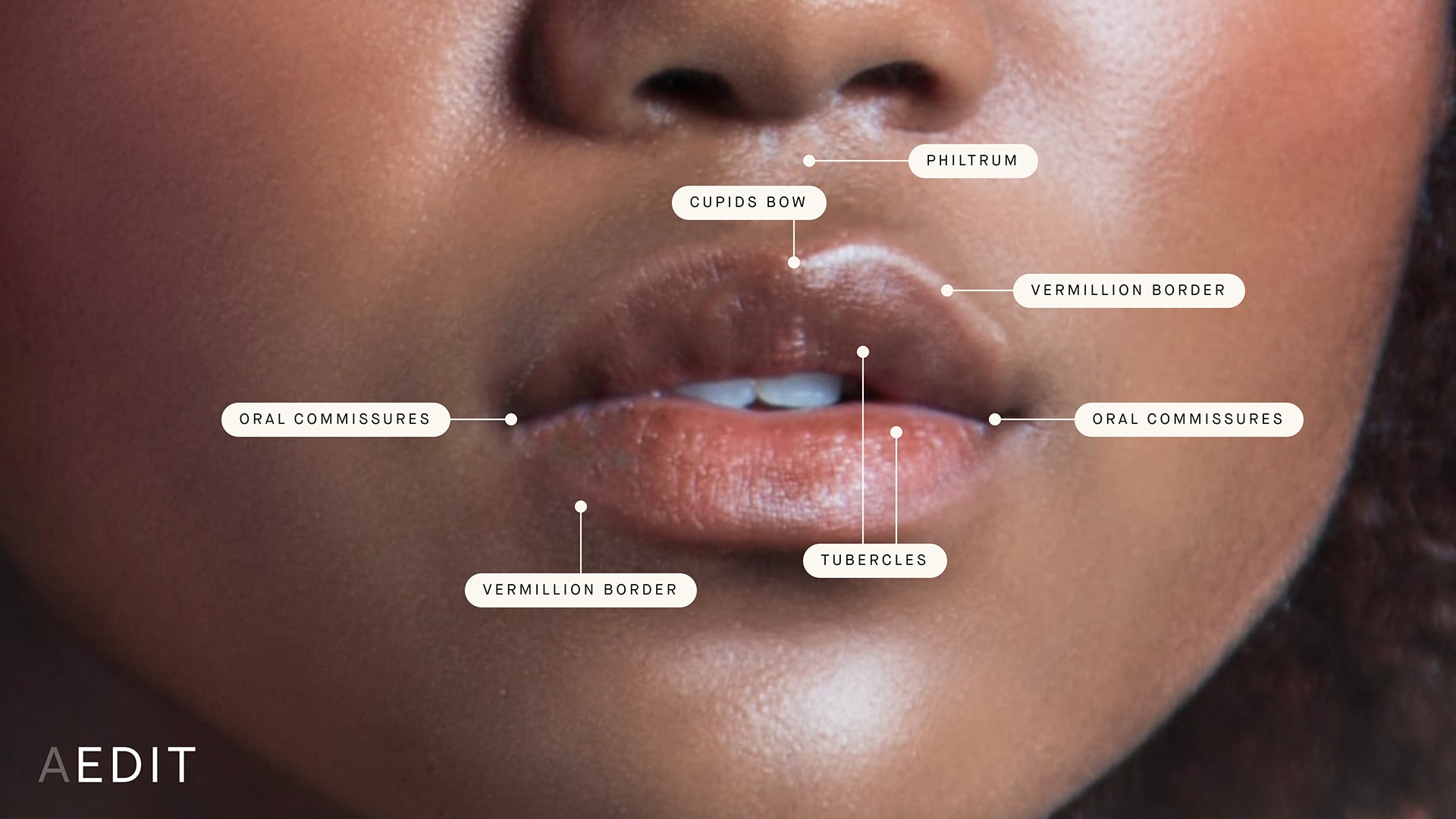Lip Ptosis
If a drooping or sagging lower lip is causing aesthetic or functional concerns, there are ways to correct it.
We all accept facial asymmetry, to some degree, as a natural part of human variation. Sometimes, however, drooping, sagging, and imbalances can cause significant aesthetic and/or functional concerns. Lip ptosis (a.k.a. lip drooping) most often impacts the lower lip and is caused by aging, trauma, previous cosmetic procedures, or certain medical conditions. Fortunately, there are a myriad of invasive and non-invasive cosmetic procedures to correct lip ptosis and restore your desired aesthetic and function.
The lips are composed of soft tissue and muscle. The outermost layer of lip cells contains hair follicles, oil glands, and sweat glands. The vermilion is the red-colored, highly sensitive area that becomes the inner mucosal membranes as you move towards the mouth.
The Anatomy of the Lip
The vermilion border is where the white roll of the lip separates the red aspect from the surrounding skin. The central upper lip is the Cupid’s bow, and the oral commissures are at the corners of the mouth where the lips meet. The primary muscles of the lips are the orbicularis oris muscle, superior tarsal muscle, levator muscle, and mentalis muscle.
There are numerous causes of lip ptosis. Natural aging may cause some degree of lip ptosis in many individuals as collagen and elastin breaks down and tissues begin to sag and droop (if the size or shape of your lips is your concern, read our guides to lip size and lip shape). Lip ptosis can also be caused by trauma from burns or scarring or previous reconstructive surgical procedures. Less commonly, lip ptosis can be caused by nerve damage, Lyme disease, neurotoxin injections (think: Botox®, Dysport®, Jeuveau®, and Xeomin®), immune disorders, and Bell’s Palsy (an oftentimes temporary paralysis).
Lip ptosis almost always affects the lower lip. It is defined as a drooping or sagging of the lower lip that can be aesthetic, functional, or both. Ptosis can affect multiple parts of the body, including the upper eyelid ptosis, breast ptosis, and ptosis of the chin. Age-related lip ptosis can lead to an overall stern or tired appearance that patients may wish to soften.
Depending on the severity of the condition, some patients with lip ptosis may require surgical correction. But plastic surgery isn't always necessary. A surgical procedure, like a lip lift, will provide a more permanent — albeit more invasive — solution, whereas injectable treatments (think: lip filler or dermal filler in the nasolabial folds) usually offer immediate results with less downtime. They are, however, temporary.
You can check out our full guide to Lip Ptosis Solutions, or read on for an overview of the treatment options:
As the name implies, lip lift surgeries are a rejuvenation procedure performed to improve the shape and size of the lip. A corner lip lift specifically targets the outer corners of the mouth at the oral commissures (where the lips meet) to tone, tighten, and re-suspend that area, hence correcting a droopy appearance. Additionally, a Bullhorn Lip Lift or Italian Lip Lift can alter the upper lip shape and positioning to correct a lip ptosis.
A VY mucosal advancement procedure creates plumper and fuller lips — without dermal fillers — to change the position and contour of the lip. Performed under local anesthesia, V-shaped incisions are made on the inside of the lip and then sutured together more tightly than they originally were. The result? A more defined vermillion border and increased volume that can help reduce the appearance of dropping.
For those looking for a non-surgical solution to lip drooping, injectables may be able to help. Lip filler (be it temporary, semi-permanent, or permanent) can be used to correct asymmetry and shape the lip. Additionally, botulinum toxin type-A (BoNT-A) injections, like Botox®, may be able to address the surrounding lip musculature.

